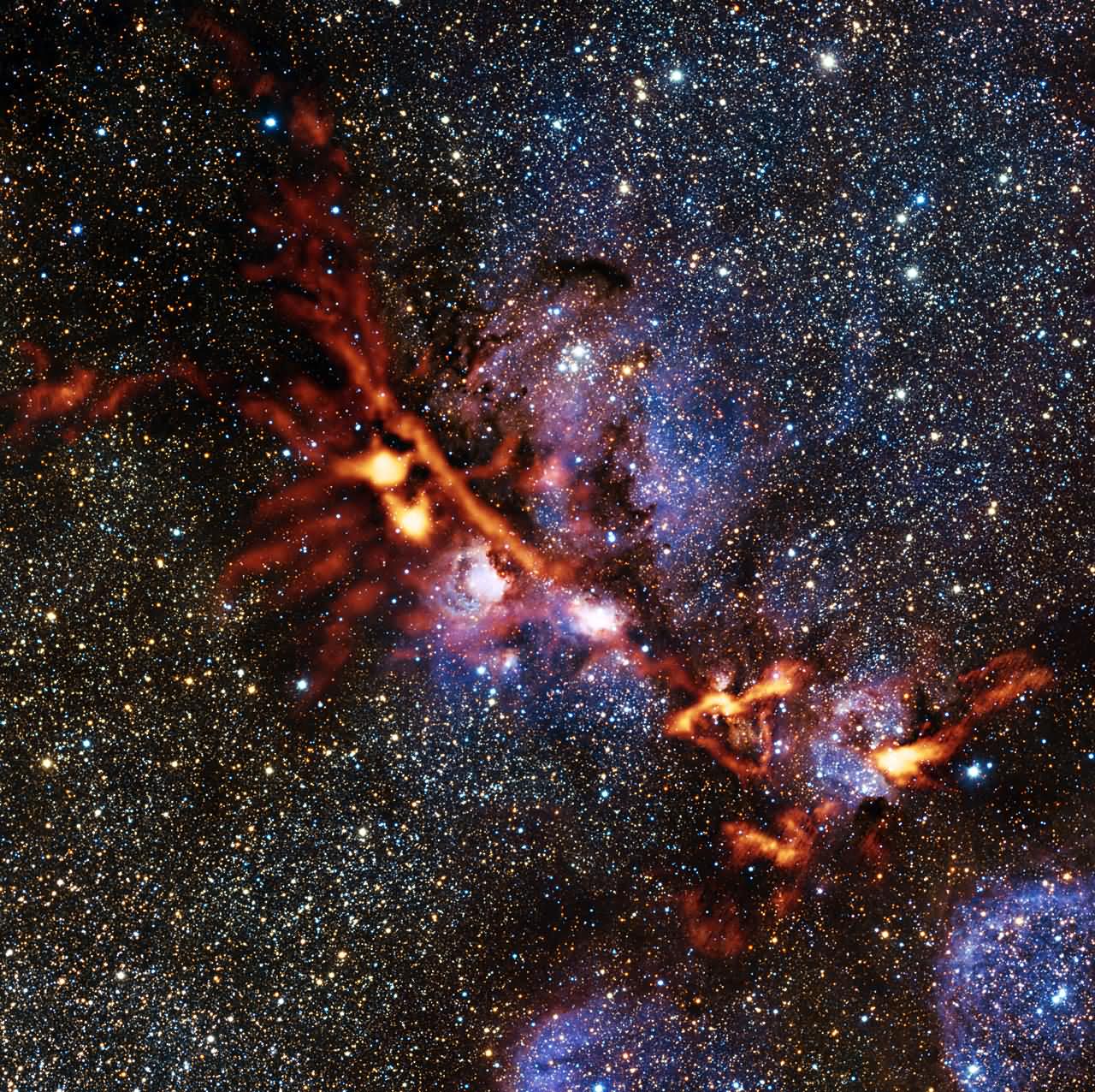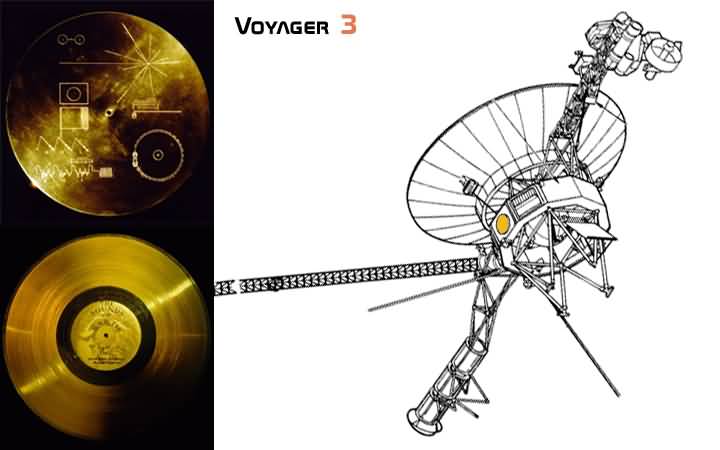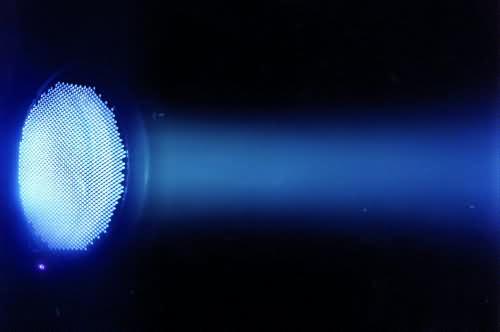The Cold Glow of Star Formation
A new instrument called ArTeMiS has been successfully installed on the APEX—Atacama Pathfinder Experiment Telescope. APEX is a 12-meter-diameter telescope located in the Atacama Desert, operating at millimeter and submillimeter wavelengths. By examining the sky in the infrared and radio regions of the electromagnetic spectrum, the telescope provides astronomers with vital insights into the depths of the Universe. The new camera mounted on the telescope has captured a remarkably detailed image of the Cat's Paw Nebula.
ArTeMiS [1] is a submillimeter-sensitive wide-field camera added to APEX's main instruments, enabling deeper and more detailed observations. ArTeMiS's next-generation detector array behaves more like a CCD camera than its predecessors, enabling wider-field images of the sky to be acquired faster and with more pixels.
The installation team [2] had to overcome unusual weather conditions to install the ArTeMiS camera on the telescope. Extremely heavy snowfall on the Chajnantor Plateau nearly blanketed the APEX control building. With assistance from the ALMA Operations Support Facility and the APEX team, the ArTeMiS box was transported to the telescope via a temporary, snow-free road.
The team then waited for the air to dry before testing the instrument, allowing the submillimeter wavelength light observed by ArTeMiS to be absorbed by the Earth's atmosphere. However, when the time came, successful test observations were made. After the testing and installation, ArTeMiS began working on several scientific projects. One of these targets was the star-forming region NGC 6334 (the Cat's Paw Nebula) in the southern constellation Scorpius. The new ArTeMiS image is significantly sharper than APEX's previous images of this region.
ArTeMiS testing has been completed, and the camera has been shipped to Saclay, France, for installation of additional detectors. The entire team is already very excited about the initial observations, and they recognize that this would not have been possible without years of hard work and the support and assistance of the APEX technical team.
Related video from here You can reach.
Notes
[1] ArTeMiS stands for Architectures de bolomètres pour des Télescopes à grand champ de vue dans le domaine sub-Millimétrique au Sol (Wide-field radiometer array for ground-based submillimeter telescopes).
[2] The CEA installation team includes Philippe André, Laurent Clerc, Cyrille Delisle, Eric Doumayrou, Didier Dubreuil, Pascal Gallais, Yannick Le Pennec, Michel Lortholary, Jérôme Martignac, Vincent Revéret, Louis Rodriquez, Michel Talvard and François Visticot.
More information
APEX is a collaboration between the Max-Planck Institute for Radio Astronomy (MPIfR), the Onsala Space Observatory (OSO), and ESO. ESO is responsible for operating APEX at Chajantor.
ESO, the European Southern Observatory, is the most important intergovernmental astronomy organization in Europe and the most productive astronomical observatory in the world. It is supported by 15 countries: Austria, Belgium, Brazil, the Czech Republic, Denmark, Finland, France, Germany, Italy, the Netherlands, Portugal, Spain, Sweden, Switzerland, and the United Kingdom. It operates an ambitious program focused on the design, construction, and implementation of robust ground-based observations that enable important scientific discoveries. ESO also plays a leading role in promoting and organizing astronomical research. ESO operates three unique, world-class observing sites in the Atacama Desert of Chile: La Silla, Paranal, and Chajnantor. At Paranal, ESO operates the Very Large Telescope (VLT), the world's most advanced optical astronomical observatory, and two survey telescopes. The infrared telescope, VISTA, is the world's largest survey telescope, and the VLT survey telescope (VST), the world's largest telescope designed to scan the sky in visible light only. ESO is the European partner of ALMA, the largest existing astronomical project and the revolutionary astronomical telescope. ESO is currently planning to build the European Extremely Large Optical/Near-Infrared Telescope, E-ELT, with a mirror diameter of 39 metres, which will be "the world's largest eye on the sky."
ESO Press Releases are translated by science community experts and science communicators from ESO member countries and other countries within the ESO Science Community Network (ESON). The ESON Turkey translation team includes experts from Ankara University (Ankara), Çağ University (Mersin), Başkent University (Ankara), Istanbul University (Istanbul), Izmir University of Technology (Izmir), and the Max Planck Institute for Extraterrestrial Physics (Germany).
Connections
- ArTeMiS project webpage at CEA Saclay ArTeMiS project page
- APEX ArTeMiS website: http://www.apex-telescope.org/instruments/pi/artemis/
Source: http://www.eso.org/public/turkey/news/eso1341/
http://www.space.com/22926-cats-paw-nebula-amazing-photo.html
http://www.sciencedaily.com/releases/2013/09/130925091736.htm









